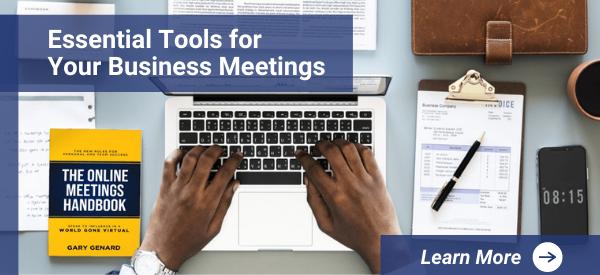Does your message resonate with stakeholders? Here's how to always hit your mark when speaking to important audiences.
Are you hitting where you're aiming when you speak to an audience?
I don't mean delivering information (the minimum to accomplish in a presentation). Same with getting all your slides in. Speaking at or under the time limit? Ditto. — All of these things should be easily achievable with a little diligence and practice.
I'm talking about making sure your message resonates.
Audiences need to be engaged for that to happen. Get listeners onboard fast! Download my Free resource, "How to Begin a Presentation: The Critical First 60 Seconds."
Here's a quick, reliable way to hit your mark with stakeholders and other audiences. It only involves two easy-to-understand steps. So, grab the advice below and go with it!
Step One: Focus on the Message, Not Yourself
It's natural to equate the success of a speech or presentation with how you feel it went for you. After all, you're (usually) the one who puts the talk together; you know the topic; and you've done any necessary research before organizing the thing. This is your presentation or other contribution.
Want the power to create true influence with business audiences? Get started today! Download my Free Presenter's Guide, "4 Characteristics of an Influential Speaker."
But you actually make it difficult for yourself to succeed by thinking like that. What I mean is, by aiming to come off well, you're ignoring the whole purpose of the talk. Your job in any presentation is to connect with listeners and give them what they need. It really doesn't matter if you're the world's best CEO. Right now, you need to be the CEO who knows how to get across to audiences.
Besides, if you're concerned with how you're doing, you're splitting your focus. Your energy should only flow in one direction: outwards toward your listeners.
Do this well, and you'll become a magician. In the blink of an eye, you will . . . disappear! When you're completely focused on getting listeners to understand you, there's no bandwith left in your mind to be thinking about yourself. I call it "disappearing into your message." Does that take a phenomenal amount of focus and discipline? Sure. But in the end, it's easier than trying to do two things at the same time. Not to mention the magic of your audience gaining a crystal-clear view of what you're trying to say, without your ego getting in the way.
Now, what about going one step further, by making the message also about them, so they understand how it will benefit them to listen to you? That's my next point.
Step Two: Shape That Message for This Audience
Even if we're good professionals who can let go of our self-regard to serve the message, we may still fall short. The truth is, we need to serve the audience most of all.
Want to hook your audience from the start? Open strongly! Learn how in my Essential Guide, "How to Start a Speech — 12 Foolproof Ways to Grab Your Audience!"
If getting content across were all that mattered, we could rely on our (over)tired and true PowerPoint to deliver the goods. But even visual components, including facial expressions and body language—essential elements of nonverbal communication—can't achieve personalized communication that resonates with a particular audience.
That's where YOU need to do your homework, concerning who these listeners are and how to make what you say matter greatly to them. If you like taking it easy and giving rote presentations that sink without a trace, skip this step. But if you want to be challenged and make your talks exciting for you and the audience, then carefully shape your message for this particular group.
Motivate and inspire audiences! Deliver messages that move them to action. Download my Free White Paper, "7 Key Components of Successful Presentations."
Let's face it: audiences differ in many respects. And not only in obvious ways like demographics, education level, and whether they are internal or external listeners. If you represent a service firm, for instance, you may serve widely differing industries (speech coaching is definitely in that category). Cultural differences can abound, even in the same company. Also, the leadership team has different needs than, say, operational personnel, and so on.
So, even after you've put together a fabulous message, you're not done. Now, it's time to think of how to make that message resonate with your audience. Some practical ways: (1) change every "I" and "me" to "you" and "we." (2) Instead of pronouncing from on-high, ask a rhetorical question and then give your information, i.e., "So what are the biggest challenges for us in the next fiscal year? Well, I think there are four." (3) Include references to them: "As a small family-owned business, your needs for healthcare insurance differ from big corporations. That's why we created this health care plan with you in mind." And (4) FIND A WAY TO MENTION HOW WHAT YOU'RE ABOUT TO SAY WILL BENEFIT THEM.
Sorry, did I shout that? If I did, it's because this is a vital part of reaching and moving audiences that too many speakers ignore. Every listener is always in a "What's-in-it-for-me?" mode. So tell them, early and specifically something like: "The reason I want to share this information with you, is because I think it's going to make your life much easier."
Wow. I'm listening. Aren't you?
You should follow me on Twitter here.
Succeed in today's virtual environment! Click on my new book below:
Gary Genard is an actor, author, and expert in public speaking training and overcoming speaking fear. His company, Boston-based The Genard Method offers live 1:1 Zoom executive coaching and corporate group training worldwide. In 2021 for the eighth consecutive year, Gary has been ranked by Global Gurus as One of the World’s Top 30 Communication Professionals. He is the author of the Amazon Best-Seller How to Give a Speech. His second book, Fearless Speaking, was named in 2019 as "One of the 100 Best Confidence Books of All Time." His latest book is The Online Meetings Handbook, now available at The Genard Method and at Amazon. To know more about TGM's services, Contact Gary here.






